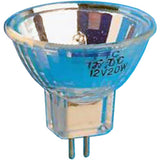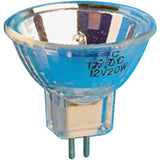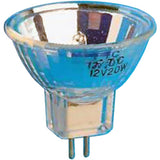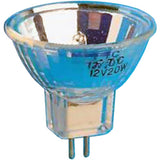How Does Dimming Alter the Halogen Cycle and Shorten Bulb Life?
Posted by Dave on for ProLampSales

It is often assumed that incandescent and halogen light bulbs are completely different technologies. In fact, halogen is just a hybrid incandescent.
Both types of light bulbs use a tungsten filament. Both burn out when the filament breaks. Both use line and low voltage the same way.
Also, both incandescent and halogen bulbs can be dimmed. But here is the interesting twist: the more a halogen bulb is dimmed, the more it becomes an incandescent light bulb again.
How Incandescent and Halogen Differ
The standard incandescent bulb is filled with a mixture of argon gas and a small amount of nitrogen gas. Inside this gas mix, the tungsten filament, heated to "incandescence," slowly evaporates. Thinner portions of the filament get hotter and they evaporate more quickly. The evaporated tungsten deposits on the inside wall of the glass. Eventually, the filament evaporates so much tungsten that it breaks or "burns out."
A halogen bulb mimics the technology of incandescent lamps except for two features. First, the filament and gas are contained in a quartz capsule resistant to high temperature. Second, a halogen gas such as bromine or iodine is added to the gas mix. With this gas mixture and higher filament temperatures, a chemical change occurs to the tungsten filament evaporation process. Instead of depositing the evaporated tungsten on the bulb glass, it is deposited instead back onto the filament itself. This process of filament regeneration is known as the halogen cycle. It can double the life of an incandescent bulb.
In short the primary difference between halogen and incandescent is the existence of the halogen cycle operating in a quartz capsule.
Dimming Halogen Lights and Bulb Life
That brings us back to dimming.
Dimming works the same way for both incandescent and halogen. Lower the filament temperature by modifying the voltage and get progressively less light output and a lower color temperature. The halogen cycle works only at high filament temperatures. If the halogen bulb is dimmed enough (down to only 20% less light), the filament temperature drops and the halogen cycle stops. At that point, it is operating in "incandescent mode" with evaporated tungsten being deposited on the capsule wall rather than back on the filament.
In conclusion, while dimming often lengthens the life of incandescent bulbs, it may shorten the life of halogen bulbs and cause darkening of the quartz capsule, leading to premature lamp failure.
Featured Products (View All)
- 0 Comments
- Posted in Halogen, Incandescent
0 Comments




